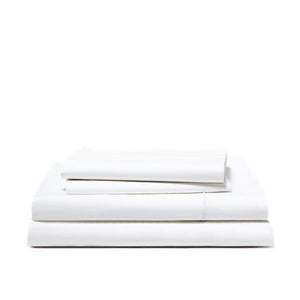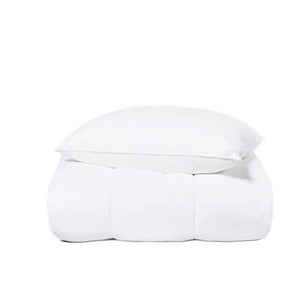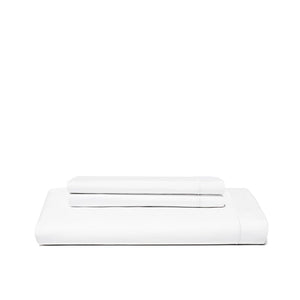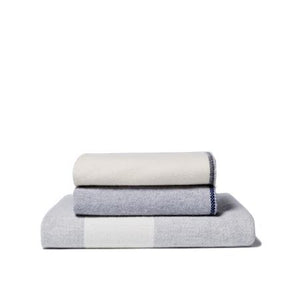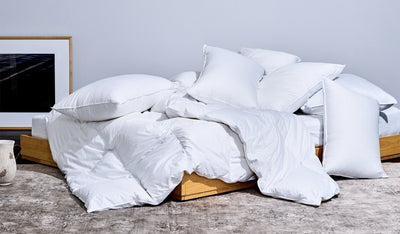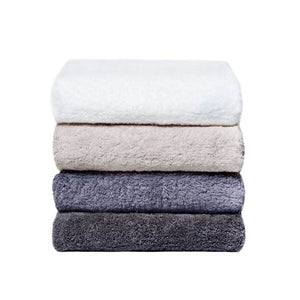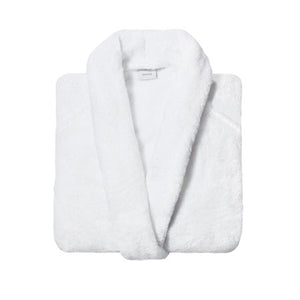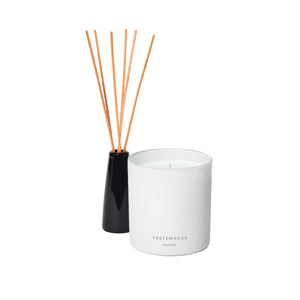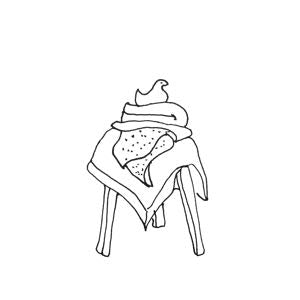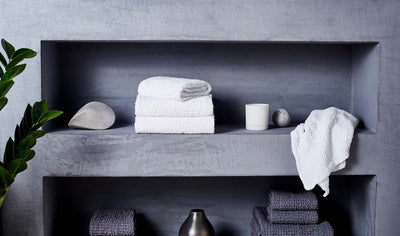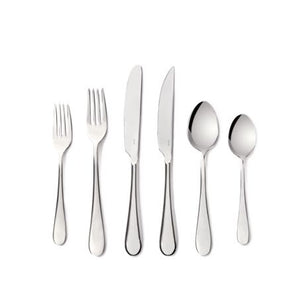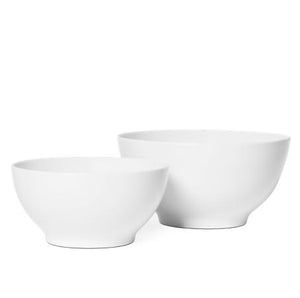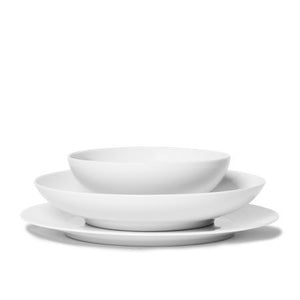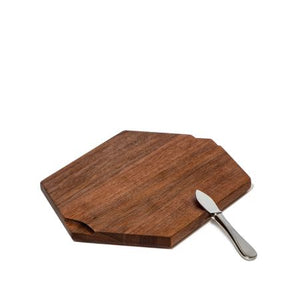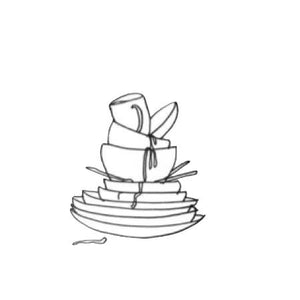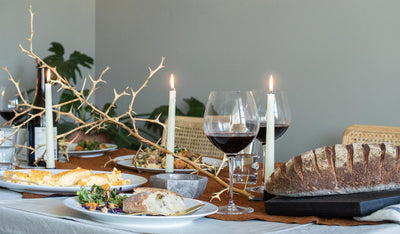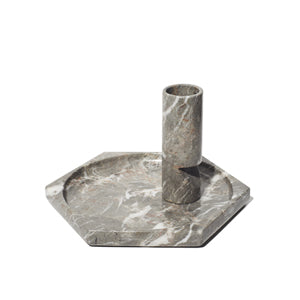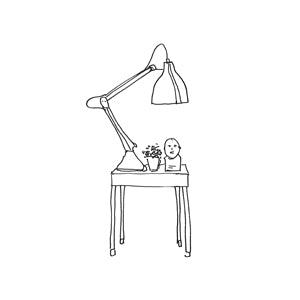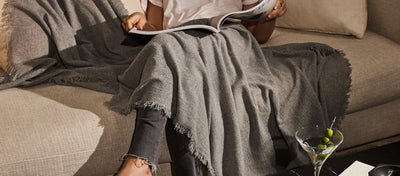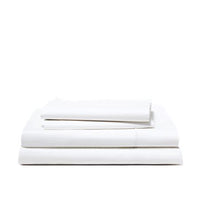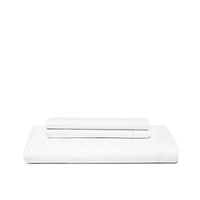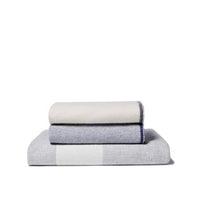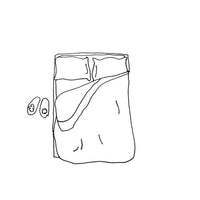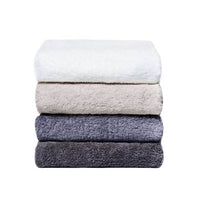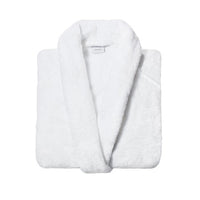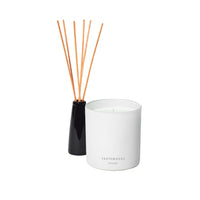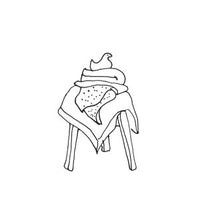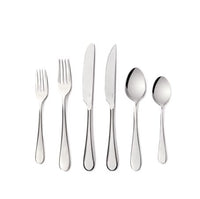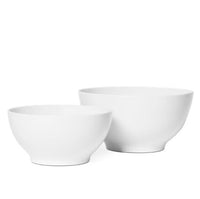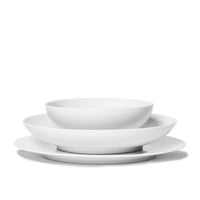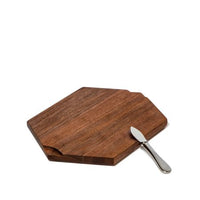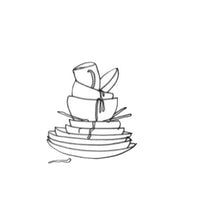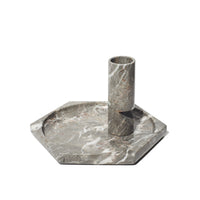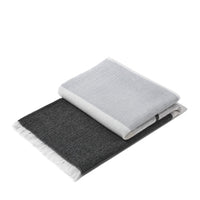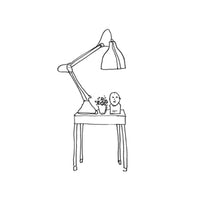
When’s the last time you sat down to dinner and were presented with an array of fussy tiny forks? We’ve all accepted that the formal table isn’t worth the trouble. But that doesn’t mean you can just put a knife and plate down whenever when it’s time to serve supper.
“Proper table mise en place sets the tone for a dining experience,” says Kasia Krupinska, general manager and wine director at Llama San, the sister restaurant to Brooklyn’s beloved Llama Inn. “It’s really not about if the guests care where utensils or plates are staged, but rather the feeling of ease when you sit down. Everything is ready and set for you to enjoy the evening; and for a moment you can forget about everything that may worry or stress you before you arrived.”
So how do you make life for your dinner guests that relaxing? We asked a pair of restaurant pros how they set the table for optimal hospitality and why and when you should steal their tricks for dining at home.

The New Normal
Let’s call this “the archetype of eating.” If you’re having a dinner party and you want to set the standard, this is what you do. A table setting like this is meant to make things as easy as possible for your guests and provide them with all they need, when they need it during the perfect meal.
You can deviate from as needed, but it should look something like this: left to right—fork on top of a napkin, dinner plate with or without a salad plate on top, knife and spoon on the right. If you’re serving something that needs a side plate (bread, etc.) that goes up to the left. Water and wine glass to the upper right. The knife blade should always be turned towards the plate (our pros said you wouldn’t believe the number of accidents that prevents.) If you want to make it things feel super fancy, add on placecard above the dinner table or right onto the plate.
The old place setting style sort of assumed you’d have help to come and course the whole affair out. But you can have the formality of the setting with a more serving style.
“There’s a reason people call it family-style—it’s because that’s how you eat with your dearest friends and family,” says Jeff Katz, who manages Crown Shy, the new must-dine spot from EMP & Del Posto veterans. “There’s no reason why food intended to be shared can’t be beautiful and thoughtful. Be sure you serve it in a way that makes it easy. For example, when serving a large cut of beef or chicken, slice it into portion sizes that are easy to move from platter to plate.”

Boldy Basic
So maybe this isn’t a dinner party, but just a chill meal with pals that you still want to feel elevated. You have permission to not bother with the whole suite of silverware.
At Llama Inn the food is the focus, so less is more.
“We usually only stage necessary utensils and plates,” Kasia says. “Minimal, but imperative. It’s disruptive to guests if we take away what they will not use and replace with what’s needed to enjoy dinner with. So we only do it once and do it right.”
Chances are no one is clearing the table during the meal for you either. If things are more casual, a single plate (or a versatile, holds-anything-bowl), fork, steak knife (they can cut through anything that way), and a napkin should help them navigate it all. You can either fold the napkin on top of the plate, or tuck it under your utensils.

Full Formal
Ok, so you are working on something much more important. Maybe this is Christmas dinner. Maybe you want to impress a future investor in your tuxedo startup. Maybe you just want to really live. Go to your normal and dial it up.
Jeff showcases the coursed nature of the meal. “If you want the place setting to feel more formal, use appetizer and entree sets,” Jeff says. “In other words, small and large settings of forks and knives. Pair small plates with small sets, and larger dishes with full-size forks and knives. Lining up many forks, knives, and spoons can feel kind of tired, but it can be a helpful trick if you have a lot of courses and not enough hands to clear and set more flatware.”
Another way to elevate the evening is by pre-setting the dessert course (it lets people know to get excited). If you are going that route, the spoon goes right above the main plate horizontally, with the coffee cup and saucer to the side. A big way of making this set-up sing is the linens. But here’s a sneaky trick: you don’t need to stock a tablecloth you’ll never use. A fresh, laundered and pressed white sateen flat sheet works fine—emphasis on fresh.

Better Buffet
So maybe you have a very tiny table or you want to keep that soup as piping as possible until guests serve themselves. The name of the game here is convenience. Don’t make people walk to the table to pick up plates and bring them back. Stack what needs to get served at the end of the table and keep what they’ll carry to a minimum. Nothing is worse than starting a serve-yourself-situation with too many things in your hands. Offer utensils and napkins at the end of the serving line or, better yet, at the table. “How many times does everyone sit down at the table and then have to get back up for spoons, etc.?!” says Jeff. “It also helps you make enough space for the plates and platters you have out. Then have salt, hot sauce, condiments, and such on the table as well. Guests won’t ask because they think it’s poor form, but if you put it on the table you’ll see it used more often than you’d expect.” You can also have their beverages at the table where they’ll be eating so it’s one less thing to balance.
Ultimately, setting the table is shorthand for your guests. It shows them what kind of meal they can expect and lets them focus on eating instead of wondering how to find the tools they need to do it. If they are sticklers for presentation, go for grandeur, but most people won’t ding you for a misplaced spoon if the food’s good.
